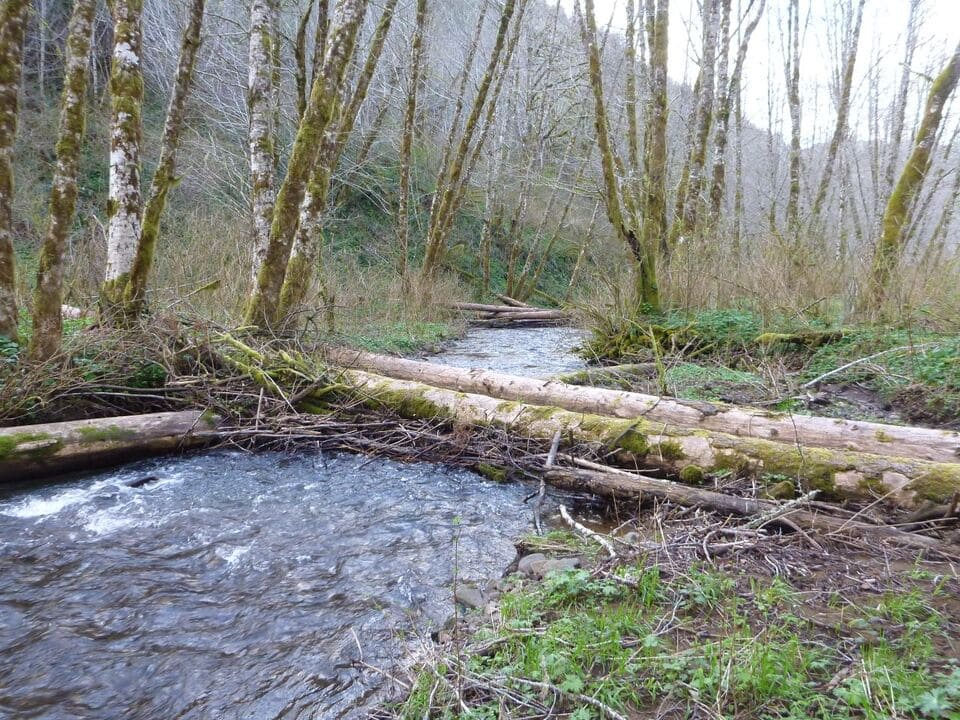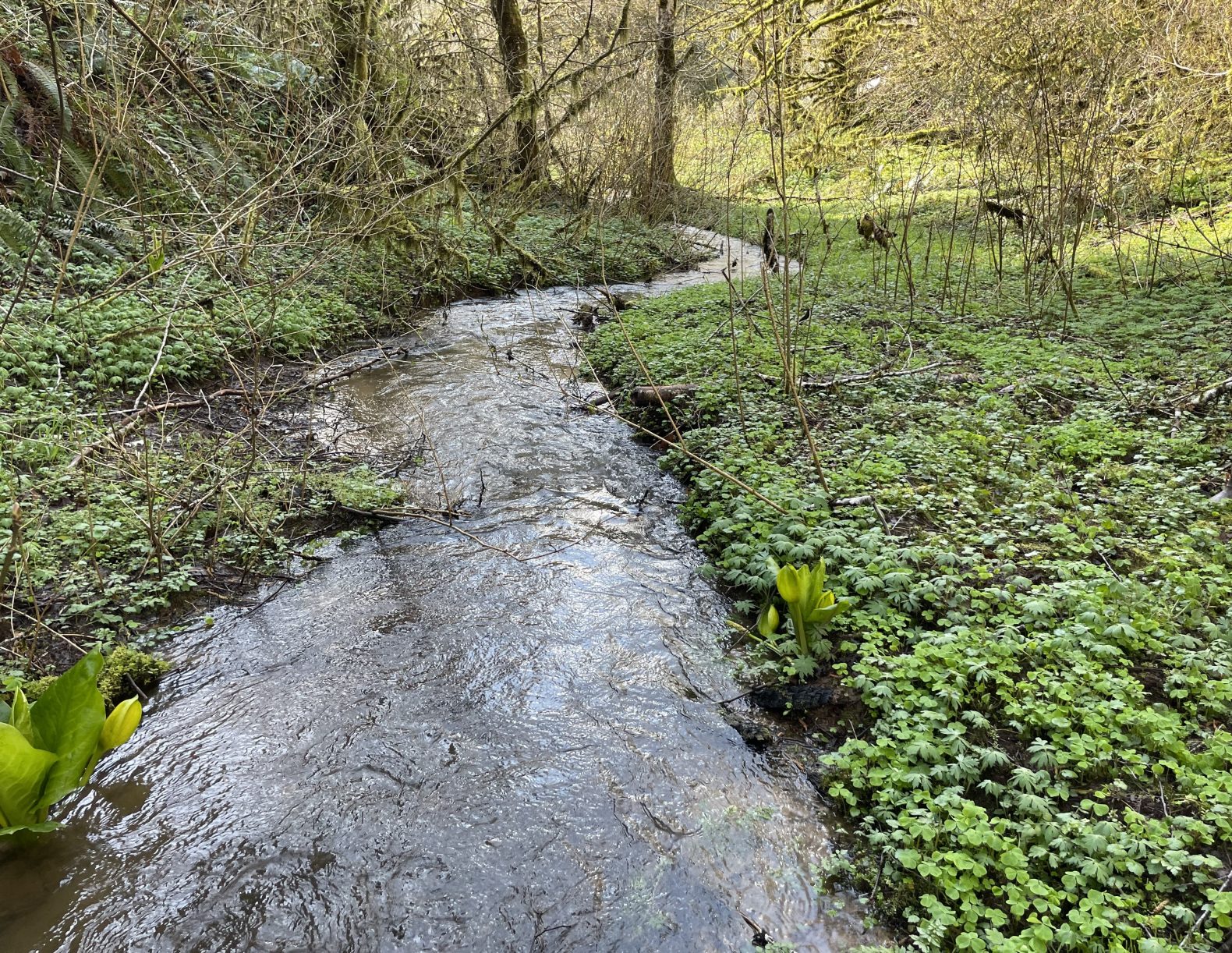Shotpouch Creek
The Marys River Watershed Council is conducting riparian and in-stream restoration work in Shotpouch Creek, a tributary of the Tum Tum and Marys rivers. Private landowners, the Bureau of Land Management, U.S. Forest Service, the Oregon Watershed Enhancement Board, National Oceanic and Atmospheric Administration and other partners provide support for the project. The restoration enhances ecosystem and floodplain connectivity and provides additional habitat for salmonids and other native species.
Progress so far

In previous phases of the Shotpouch creek project the Watershed Council worked with 15 landowners over a 5 mile reach of the stream to remove fish passage barriers, install large woody debris, pull back incised stream banks, and install fencing and off-channel watering systems to remove livestock from the streambed. The watershed council also planted 37 acres of native riparian plants near Shotpouch creek. These actions helped to stop additional anthropogenic impacts on the creek and resume natural processes that build habitat quantity and complexity.



Aerial views of a section of Shotpouch Creek before, during, and after riparian planting and livestock exclusion fencing. Riparian areas have become fuller and more diverse. Photography sourced from Google Earth

Future restoration
Additional treatments will restore untreated stream reaches and build upon gains already made by enhancing previously treated reaches. The Watershed Council will be able to reconnect legacy floodplain areas and build a new multi-braided floodplain site. Floodplain reconnection helps lower flood intensity in downstream reaches and increase retention of colder groundwater for release during the summer. Streams with reconnected floodplains can braid and meander freely. When supplied with sources of large woody debris floodplains can enhance habitat for wintering salmonids and can support healthier populations year-round.
The Watershed Council will add additional large woody debris to the 15 artificial log structures previously installed and install 11 more on the reconnected floodplains. A bank pullback will help to protect previously installed livestock exclusion fencing threatened by erosion.

Beaver Habitat Enhancement
On an untreated tributary of Shotpouch Creek, the Watershed Council will install multiple beaver dam analogs and post assisted log structures. Newly installed structures will mimic the positive effects of beaver activity and encourage beaver establishment in the restored site. Beaver dams help to retain water and provide enhanced habitat for fish and other aquatic organisms without impeding their movement through the stream.
The Council will plant native plants along the restoration site to encourage beaver activity and replace trees that are expected to be effected by emerald ash borer. In previously planted sites invasive plants that have established since restoration will be removed and some trees will have wire-cages removed to allow beaver activity.
